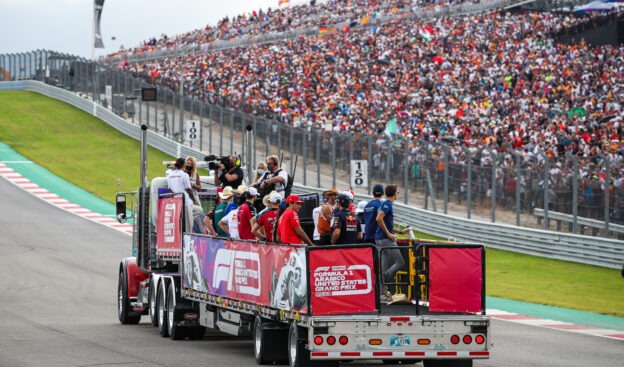Top Five F1 Fan Stereotypes Deconstructed

Recently, Max Verstappen made headlines for his comments about refusing to participate in another ‘fake’ reality TV show with Netflix, Drive to Survive. The news didn’t come as a shock to some F1 fans, who have publicly spoken out against the series.
Though Drive to Survive, as hinted by fellow Red Bull driver Sergio Perez, did help bring new fans into the racing series, some long-time racing enthusiasts felt the show was needlessly dramatic. Of course, this type of skewing in reality TV can be expected.
Verstappen, along with any other driver or staff member featured on the show, must sign off on a release of defamation of character. This standard clause in reality TV show contracts means that participants forfeit the right to sue Netflix in case of being ‘misrepresented’, which would normally be grounds for a defamation suit
This doesn’t give Netflix free rein to make up storylines and grossly mishandle what happens in a standard F1 season—trust the old guard of fans, it’s dramatic enough as is. However, participants in Drive to Survive do hand over the right to let Netflix draw out small moments.
For drivers and manufacturers and all the staff in-between, the focus is always on putting out the best performance possible. Anything that compromises that mission won’t last long in the real F1 world; in some instances, Netflix has shown the quick overturn of lagging parts in the racing series.
However, F1 isn’t a stranger to misrepresentation and stereotypes. At nearly every level of the sport, there’s a skewed belief from outsiders. Many relate to wealth, while others instead portray drivers and manufacturers as grave and lifeless.
True F1 fans know these rumors to be pure speculation, but those new to the bandwagon might need to dig a little deeper—especially as the F1 boom continues. Not only are broadcasting groups devoting more time to the racing series, but sportsbooks have also pivoted to offer more markets and expand pundit analysis.
With free bet offers on the table from a range of sportsbooks, more and more F1 fans can stretch their knowledge of the industry. Still, those basing their decisions on Netflix alone will be in for a sore surprise, as there’s much more to know about than commonly held stereotypes and the drama showcased on the streaming platform.
Can’t separate fact from fiction? Here are five of the most common (and untrue) Formula One stereotypes.
Ferrari Fans Are Insane
Some might make the argument that this stereotype is false because it actually downplays how fanatical Ferrari supporters are. In reality, they’re not any more zealous than other Formula One manufacturer fans… they’ve just got a flashier history behind them.
The Tifosi, as fans are known, have a long list of legendary drivers that they consider ‘their own’. This is true for any manufacturer, but Ferrari’s list of drivers is truly admirable—there’s Schumacher, González, Amon, and Lauda, to name a few.
Additionally, Ferrari goes above and beyond to maintain a certain public image. Compared to clubs like Red Bull and McLaren, there’s less fan engagement. This is done, in part, to curate the image of an elevated Scuderia. Apparently, it works.
Drivers Come from Wealth
Lewis Hamilton is the shining star that breaks this mold—and he’s been vocal about it for quite some time, along with other challenges unique to his career. And there’s a very good reason Formula One is associated with wealth; manufacturers spend upward of $280 million per car back in 2019, according to Forbes.
However, the notion that all drivers come from wealth is false. Hamilton, along with legends like Schumacher and newcomers like Ocon, have all faced the hardships associated with karting as a prerequisite to becoming an F1 driver.
For context, top karts cost around $8,000, which makes them out of reach for many families. Still, drivers from middle and lower-class backgrounds do exist.
Drivers are Cut-throat & Nasty
Netflix would love for you to believe this—and, to some extent, it’s true. After all, there are only twenty positions available in F1, and mistakes in the margin of centimetres can cost a driver their career. As such, they must be exacting and stoic… but that doesn’t make them unsportsmanlike.
Drivers are cut-throat only when appropriate during a race. And they often share words with one another in relation to risky moves on the track, pulling rank mostly when safety is a concern.
The Little Guy Doesn’t Stand a Chance
Newcomers to Formula One might think the sport is a throw-up between Mercedes and Red Bull, with a possible push from Renault, Ferrari, and McLaren. However, F1 is just like most other major sports leagues in the world: there are a few major players, then a cast of hardened competitors that aim to be the next dynasty.
For example, Williams Racing might look like the battered stepchild of Formula One based on Drive to Survive. However, the manufacturer is one of only four F1 groups to have won over 100 races (alongside McLaren, Ferrari, and Mercedes).
Though Williams is now the little guy on the scene, it’s got a long and celebrated history to draw on. Many are waiting for their eventual return to the top.
F1 is for Classy People; NASCAR is for Trashy People
Formula One fans are often compared to the US’s NASCAR series. Given F1’s associated with wealth and prestige, its fans tend to be considered wealthier and classier by association. NASCAR fans, on the other hand, are often portrayed like the characters in Talladega Nights: The Ballad of Ricky Bobby.
However, the racing series have a lot in common and require very similar skill sets from their drivers. Formula One, for all its expensive tinkering, can top out at 235mph, hitting 62mph in 2.5 seconds. A NASCAR, in all its hodgepodge glory, can hit a speed of up to 212mph, hitting 62mph in 3.5 seconds.
However, NASCAR teams work with between $200,000 to $400,000 to create their championship-winning car. As mentioned above, an F1 car can cost up to $280 million. That means F1 manufacturers spend over 140 times what a NASCAR team will spend to create a speed difference of only 23mph and a time difference of only one second.
The point here? They’re both badass sports that draw on human ingenuity, mechanical innovation, attention to detail, and ability to handle a lot of Gs.
Disclaimer:
The opinions expressed are those of the author's and do not necessarily reflect the opinions or views of F1-Fansite.com, staff or partners.
✅ Check out more posts with related topics:















What a load of Bollocks
" That means F1 manufacturers spend over 140 times what a NASCAR team will spend to create a speed difference of only 23mph and a time difference of only one second." 😂. What a joke this is. Comparing straight line speeds is for simpletons. How about running a Nascar around Spa and run the slowest 2021 F1 car around the oval; see how lap times compare.
The nerve of comparing an upside down Jet plane to a glorified Flinstone car. Lol. Go figure why the richest country can't produce a decent driver for the pinnacle of motorsports.
Factoid to Jax:
China is the richest country in the world.
Go figure...
✅ Checkout the latest 50 F1 Fans comments.